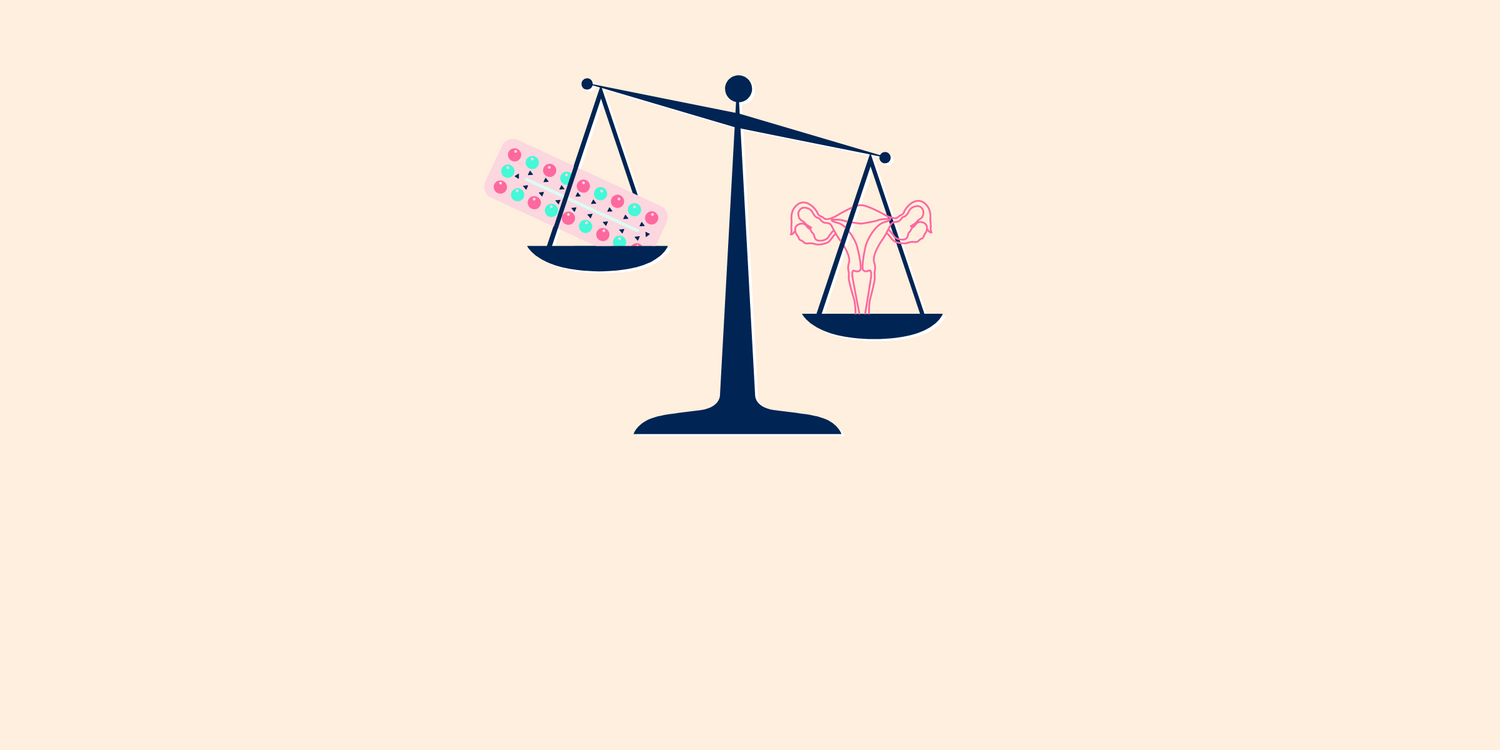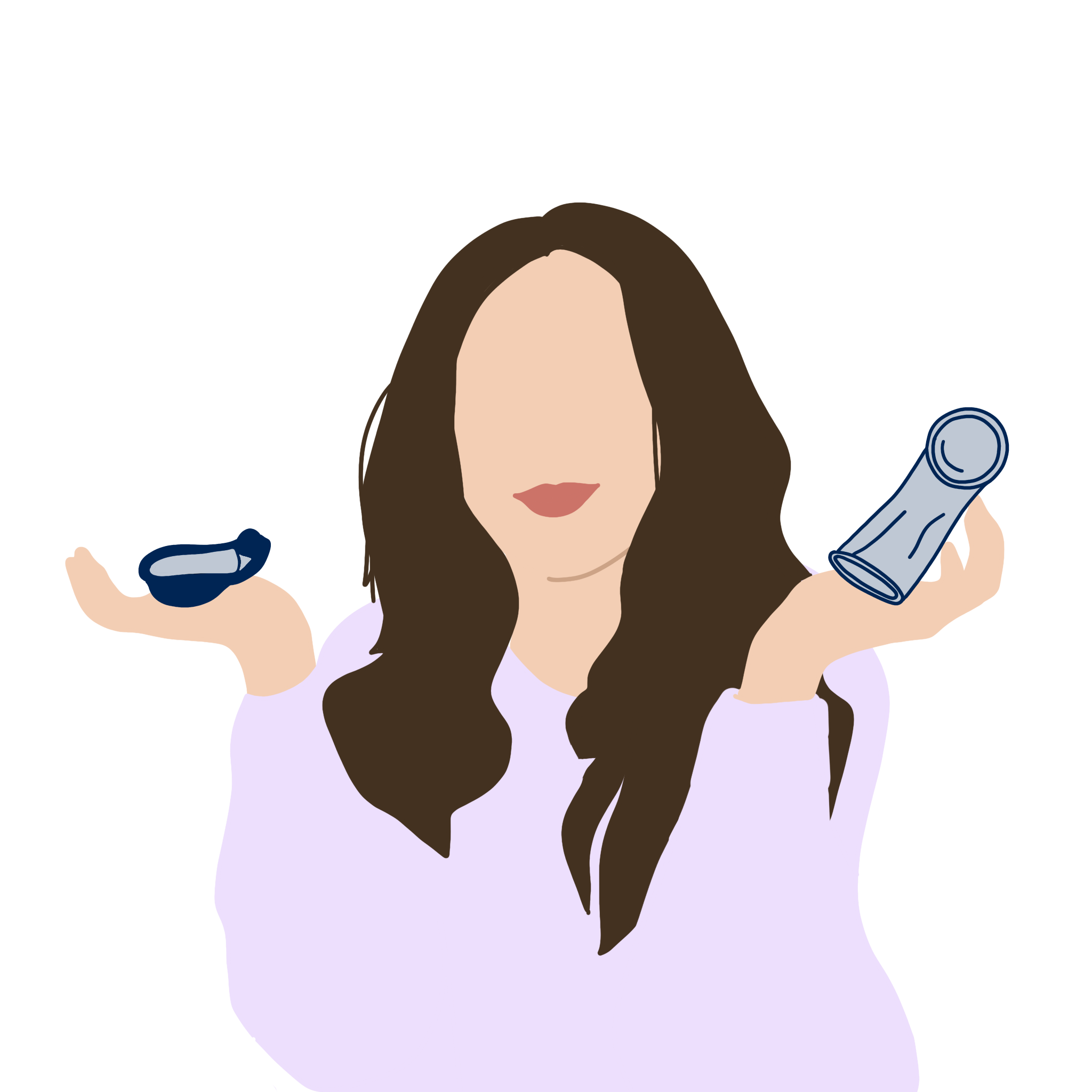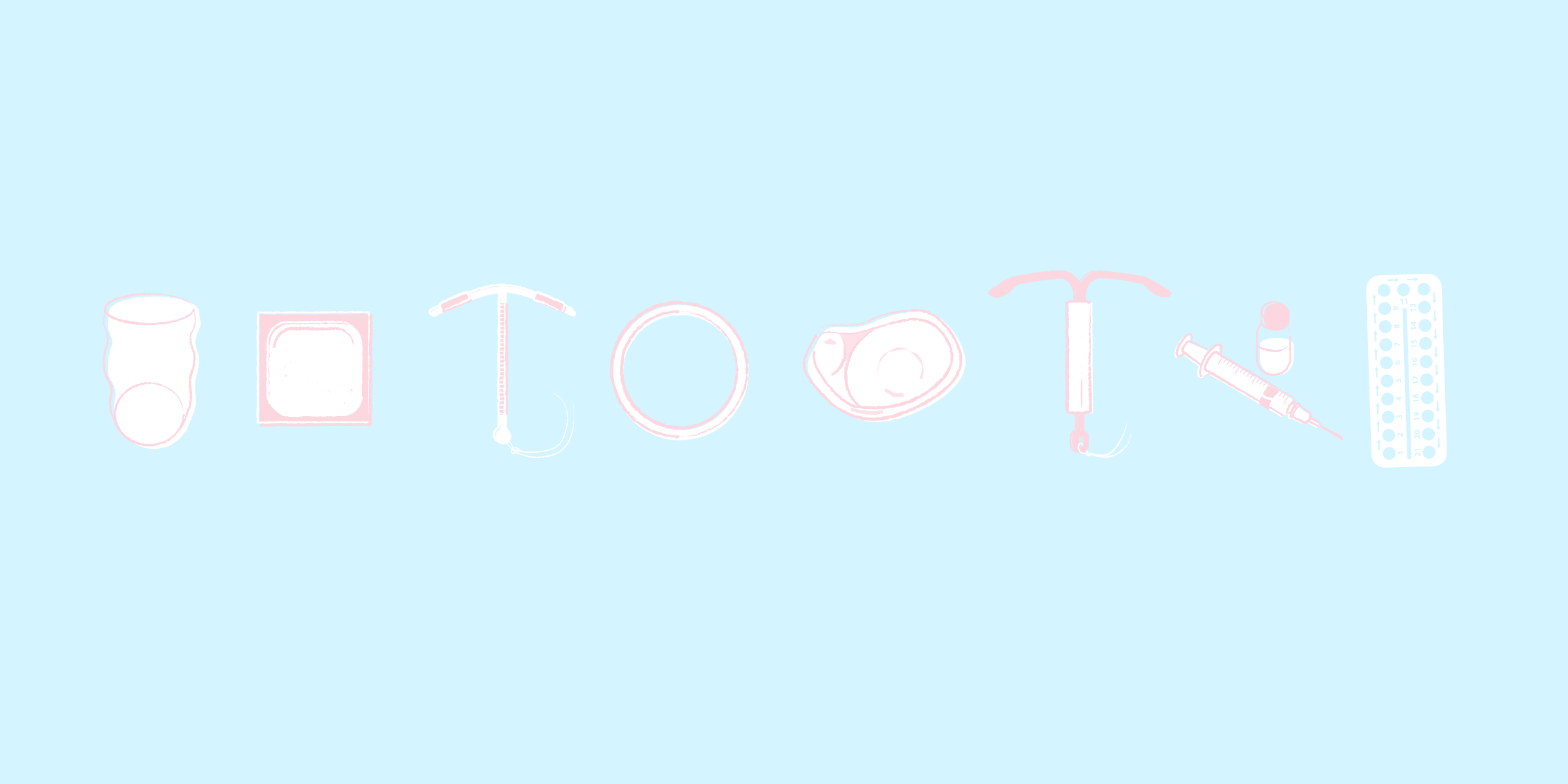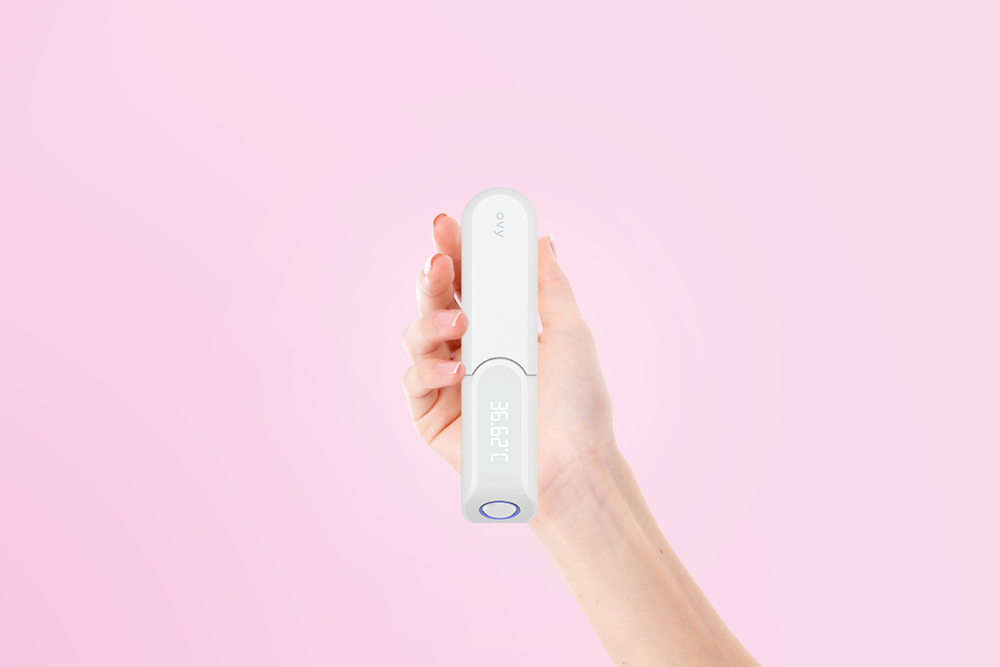Key Takeaways
- Die Skepsis gegenüber der Pille steigt und viele Frauen* entscheiden sich mittlerweile, die künstlichen Hormone abzusetzen und sich nach einer anderen Verhütungsmethode umzugucken.
- Viele zögern jedoch, weil sie Nebenwirkungen befürchten.
- Symptome wie Haarverlust, unreine Haut oder stärkere Periodenschmerzen sind leider relativ häufig. Wir erklären dir, wie sie zustandekommen und was hilft.
The pill, alongside condoms, is the most commonly used contraceptive in Germany (1). Young women* who visit a gynecologist to discuss suitable contraception often leave with a prescription for Valette, Maxim, Evaluna, etc. And not without reason: with a Pearl Index of 0.1, the pill is one of the safest contraceptive methods (2). However, the intake of synthetic hormones strongly interferes with the body, which is why many women* now decide to switch to an alternative (3). Yet even after stopping the pill, many women* notice sometimes severe side effects.
To understand why these side effects occur and what can be done about them, it is first necessary to know which hormones play which role during the different phases of the cycle.
How the Menstrual Cycle Works
The female menstrual cycle is largely regulated by two hormones: estrogens and progestins (progesterone). These are primarily produced in the ovaries. In addition, the pituitary gland (hypophysis) produces FSH (follicle-stimulating hormone) and LH (luteinizing hormone). Their release depends on estrogen and progesterone levels.
In the first half of the cycle, which begins on the first day of menstruation and lasts until ovulation, estrogen and progesterone are low, prompting the pituitary gland to produce FSH. FSH stimulates the maturation of a follicle in the ovaries. This stage of the cycle is therefore called the follicular phase. The larger the follicle grows, the more estrogen it produces. This hormone initiates the buildup of the endometrium, where a fertilized egg could implant. Estrogen also changes the consistency of cervical mucus, making it clearer and more stretchable. Women* who use the symptothermal method use cervical mucus consistency as a sign of their fertile phase.
In the middle of the cycle, when estrogen exceeds a certain threshold and the follicle signals that it is mature, the pituitary gland releases LH, which triggers ovulation. The egg enters the fallopian tube, which serves as its transport pathway to the uterus. The remaining follicle becomes the corpus luteum, which mainly produces progesterone but also some estrogen. Progesterone causes basal body temperature to rise by 0.3 to 0.5°C: the second body signal used in the symptothermal method.
The high levels of estrogen and progesterone keep FSH low. If fertilization does not occur, the corpus luteum regresses and hormone levels fall again. This second half of the cycle is therefore called the luteal phase.
The drop in hormone levels signals the cells of the endometrium to contract. The tissue breaks down so that it can be shed during menstruation. Even during the period, FSH stimulates new follicle development.
How Does the Pill Work in the Body?
For women* taking the pill, some of these natural processes are suppressed, depending on the type of pill. There are two main types: combination pills (micro-pills) and mini-pills.
The combination pill (also called micro-pill) contains both progestin and estrogen. This hormone combination works at three points in the female cycle to prevent pregnancy. It suppresses egg maturation and ovulation, alters the cervical mucus so sperm cannot easily pass, and prevents the proper buildup of the uterine lining so a fertilized egg cannot implant.
Mini-pills contain no estrogen, but either the progestin levonorgestrel or desogestrel. These thicken the cervical mucus so sperm cannot enter the uterus. They also prevent proper endometrial buildup, making implantation difficult. Mini-pills with desogestrel also suppress ovulation.
During pill intake, hormone levels remain constant. Only with pills that include a break does the concentration temporarily drop, resulting in a withdrawal bleed.
When in the Cycle Can I Stop Taking the Pill?
Gynecologists recommend not stopping the micro-pill mid-blister, but rather finishing the last pill and then not starting a new pack after the break. This way, the body has a chance to resume independent production of FSH and LH. If you are taking the mini-pill, you can stop at any time.
What Happens After Stopping the Pill?
While taking the pill, hormone levels remain constant, and the cycle’s processes are not triggered. Once synthetic hormones stop, the body must take over again.
Without the pill, the constant supply of estrogen and progesterone ends, and the pituitary gland is no longer suppressed from releasing LH and FSH. All the processes of the female cycle restart, and ovulation can occur.
However, if the body has maintained constant hormone levels for months or years and the pituitary has not been signaling, it may take time before natural fluctuations resume.
Side Effects After Stopping the Pill
During the months of adjustment, many women* report various side effects. These are due to hormonal imbalances left by the pill. In a survey on Ovy’s Instagram channel, the most frequently reported negative side effects were acne/skin problems (21.31%) and irregular cycles (11.48%). A more relaxed and happier outlook (9.84%) was noted as the biggest positive effect.
Hormones, including sex hormones, always fulfill multiple functions in the body, so side effects vary widely and their duration differs from woman* to woman*.
Below you’ll find tips tailored to the most common issues after stopping the pill. Keep in mind that these tips only support your body during the adjustment phase. An irregular cycle and the other side effects are normal and usually subside after a few months. If you experience severe symptoms or are uncertain, consult your gynecologist.
Skin Problems – How to Support Your Body
After stopping the pill, the body initially falls into a “hormonal dip.” Estrogen supply stops. Without estrogen, hair becomes weaker, blood circulation in the skin decreases, and more free testosterone circulates in the body, as estrogen normally binds it. Free testosterone binds to receptors in sebaceous glands, producing more sebum, leading to oily skin and hair.
What helps?
-
Regulate testosterone: Exercise, check your zinc levels, reduce insulin spikes, and include omega-3 fatty acids and lignans.
-
Proper skin care: Build a skincare routine tailored to your skin type.
-
Give it time: Your hormones need time to stabilize, and your skin will follow.
The Liver as a “Construction Site”
The liver is another factor contributing to skin issues. It treats the pill’s synthetic hormones as toxins to be broken down (4). Every day, it filters these substances from circulation. This was considered in the pill’s development: it is dosed high enough to remain effective despite the liver’s first-pass effect, though about three-quarters of the contents go to the liver. Daily intake, especially combined with unhealthy diet, caffeine, or alcohol, can overload it.
If the liver slows down under the burden, less free testosterone is broken down. After stopping the pill, oily skin and acne may worsen, as free testosterone is neither bound by estrogen nor processed by the liver.
What helps?
-
Warmth: Regular liver compresses can support its function.
-
Diet: Reduce refined carbohydrates like sugar and wheat products. Eat liver-supportive foods such as beets, avocado, cabbage, and citrus fruits. Bitter substances from coriander, turmeric, artichokes, or milk thistle also help.
The liver is complex and involved in many processes, so cycle disturbances can also result from impaired liver function.
Irregular Cycle – How to Support Your Body
Aside from aesthetic issues, an irregular cycle is the main concern for many women* after stopping the pill. Women* with a desire to conceive may find irregular or long cycles particularly stressful, as ovulation prediction becomes nearly impossible. For those avoiding pregnancy, a missing period can be equally unsettling.
If menstruation does not return within three months, it is called post-pill amenorrhea. According to a 2006 study, this affects only about six percent of women* (5). More common is a long, irregular cycle.
What helps?
In four steps, you can support your body if your cycle is irregular after stopping the pill:
-
Reduce stress
-
Lower free testosterone
-
Get your hormone levels checked
-
Track your cycle
More Painful Periods
One thing to expect: if you had painful periods before the pill, and they disappeared while taking it, they will likely return after stopping.
This is because in natural cycles there is usually less progesterone than in pill cycles (6). Progesterone supports blood flow to the endometrium, so with lower levels, cramping can be stronger as the uterus works harder to shed the lining.
What helps?
-
Heat
-
Light exercise
-
Magnesium to relax muscles
-
Seek medical advice if pain is severe
Mood Changes – Why the Pill Affects Emotions
Studies suggest that affect variability is significantly reduced while taking the pill (7). This means emotions fluctuate less. Women* who usually feel inspired, motivated, or enthusiastic may miss those highs and feel low as a result.
Does the Pill Cause Depression?
Statistically, more antidepressants are prescribed during the first year of pill use than otherwise (8). This is linked to the reduced positive affect variability. However, this does not mean the pill causes depression. Rather, it may unmask pre-existing depressive tendencies in women* (9).
Medically Reviewed
This text was created by medical editors on the basis of specialist medical literature and current studies. Our aim is to work scientifically, identify sources and regularly check that the content is up to date.
References & Literature
- Repräsentativbefragung 2011, BZgA: Verhütungsverhalten Erwachsener (PDF)
- Leitlinien der Deutschen Gesellschaft für Gynäkologie und Geburtshilfe Juli 2004, pro familia. Pearl-Index, Methode. "3.1 Übersicht und Pearl-Index." Facharztwissen Gynäkologie 3 (2021): 42.
- Kramarz, Susanna, et al. "Hormonmüdigkeit–gibt es sie? Was sind die Alternativen?." Der Gynäkologe 55.5 (2022): 379-385.
- Segerer, Sabine, and Christoph Keck. "Unverträglichkeit der Pille." gynäkologie+ geburtshilfe 24.6 (2019): 32-34.
- Frank-Herrmann P et al.: Zyklusverhalten nach Absetzen von oralen Kontrazeptiva. J Reproduktionsmed Endokrinol. 2006;3(1):54-57.
- Jaroszewski JJ, Markiewicz W, Maslanka TS, Skarzynski DJ. (2009). Influence of nonsteroidal anti-inflammatory drugs on progesterone production by cultured bovine luteal cells. Pol J Vet Sci. 12(3), pp. 305-10.
- Jarva et al: Do oral contraceptives act as mood stabilizers? Evidence of positive affect stabilization (Archives of Women’s Mental Health, 2007)
- Association of Hormonal Contraception With Depression. Charlotte Wessel Skovlund 1, Lina Steinrud Mørch 1, Lars Vedel Kessing 2, Øjvind Lidegaard 1
- Bundesinstitut für Arzneimittel und Medizinprodukte: Bulletin zur Arzneimittelsicherheit (Paul-Ehrlich-Institut, 2019) (PDF)





